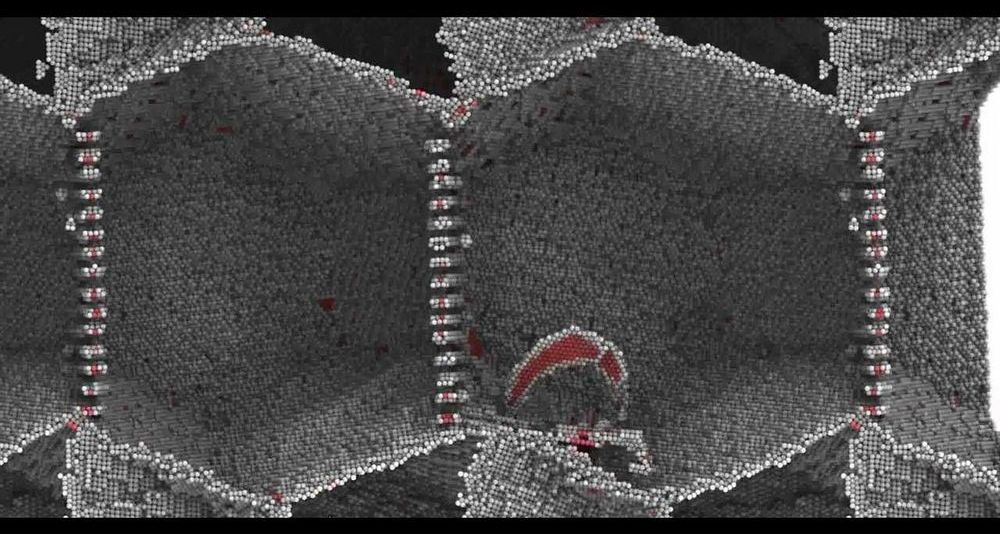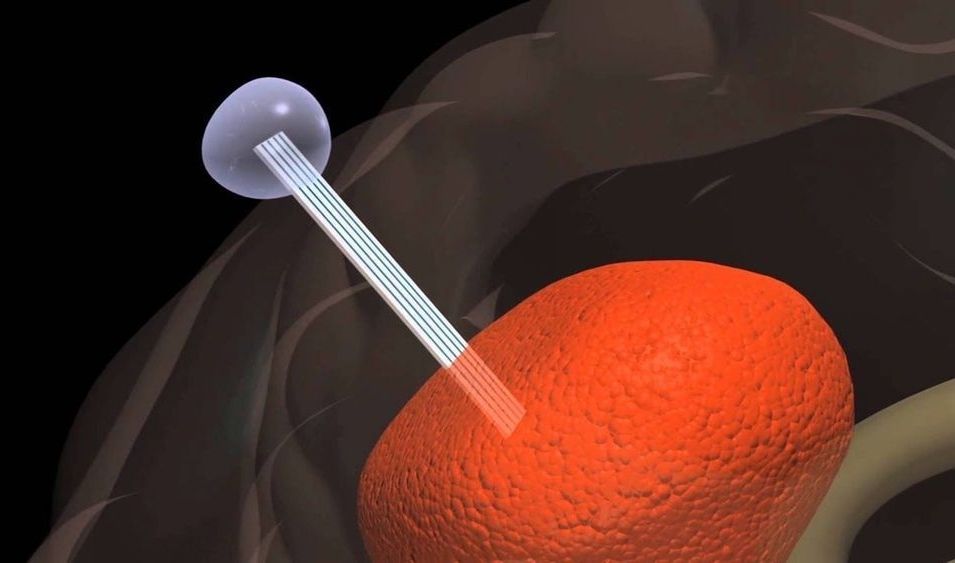Pants to die for–and in.
- https://twitter.com/share?url=https://www.fastcompany.com/90…0%20years” rel=“noopener noreferrer”>
1 minute Read.
Pants to die for–and in.
1 minute Read.

Circa 2013
When a material is damaged, you wouldn’t expect pulling it apart to suddenly make it less damaged. This counterintuitive effect is exactly what researchers at MIT observed in an experimental model recently, and it was so unexpected that the results had to be rechecked before anyone was ready to believe it. Astonishingly, it seems that under the right conditions, metal with small flaws and cracks can heal itself when tension is applied — if you pull it apart, it puts itself back together.
Princeton researchers have demonstrated a new way of making controllable “quantum wires” in the presence of a magnetic field, according to a new study published in Nature.
The researchers detected channels of conducting electrons that form between two quantum states on the surface of a bismuth crystal subjected to a high magnetic field. These two states consist of electrons moving in elliptical orbits with different orientations.
To the team’s surprise, they found that the current flow in these channels can be turned on and off, making these channels a new type of controllable quantum wire.
Researchers have launched an ultra-large virtual docking library expected to grow to more than 1 billion molecules by next year. It will expand by 1000-fold the number of such “make-on-demand” compounds readily available to scientists for chemical biology and drug discovery. The larger the library, the better its odds of weeding out inactive “decoy” molecules that could otherwise lead researchers down blind alleys. The project is funded by the National Institutes of Health.
“To improve medications for mental illnesses, we need to screen huge numbers of potentially therapeutic molecules,” explained Joshua A. Gordon, M.D., Ph.D., director of NIH’s National Institute of Mental Health (NIMH), which co-funded the research. “Unbiased computational modeling allows us to do this in a computer, vastly expediting the process of discovering new treatments. It enables researchers to virtually “see” a molecule docking with its receptor protein—like a ship in its harbor berth or a key in its lock—and predict its pharmacological properties, based on how the molecular structures are predicted to interact. Only those relatively few candidate molecules that best match the target profile on the computer need to be physically made and tested in a wet lab.”
Bryan Roth, M.D., Ph.D., of the University of North Carolina (UNC) Chapel Hill, Brian Shoichet, Ph.D., and John Irwin, Ph.D., of the University of California San Francisco, and colleagues, report on their findings Feb. 6, 2019 in the journal Nature. The study was supported, in part, by grants from NIMH, National Institute of General Medical Sciences (NIGMS), the NIH Common Fund, and National Institute of Neurological Disorders and Stroke (NINDS).
The quantum internet will require fast-moving data and the Australian National University believes it has found a way to measure information stored in light particles which will pave the way for a safe “data superhighway”.
Circa 2005
Until 1993 LEDs could only produce red, green and yellow light. But then Nichia Chemical of Japan figured out how to produce blue LEDs. By combining blue LEDs with red and green LEDs – or adding a yellow phosphor to blue LEDs – manufacturers were able create white light, which opened up a number of new applications. However, these LEDs tend to produce white light with a cool, bluish tinge.
The white-light quantum dots, by contrast, produce a smoother distribution of wavelengths in the visible spectrum with a slightly warmer, slightly more yellow tint, reports Michael Bowers, the graduate student who made the quantum dots and discovered their unusual property. As a result, the light produced by the quantum dots looks more nearly like the “full spectrum” reading lights now on the market which produce a light spectrum closer to that of sunlight than normal fluorescent tubes or light bulbs. Of course, quantum dots, like white LEDs, have the advantage of not giving off large amounts of invisible infrared radiation unlike the light bulb. This invisible radiation produces large amounts of heat and largely accounts for the light bulb’s low energy efficiency.
Continue reading “Quantum dots that produce white light could be the light bulb’s successor” »
Circa 2018
Researchers have demonstrated nanomaterial-based white-light-emitting diodes (LEDs) that exhibit a record luminous efficiency of 105 lumens per watt. Luminous efficiency is a measure of how well a light source uses power to generate light. With further development, the new LEDs could reach efficiencies over 200 lumens per watt, making them a promising energy-efficient lighting source for homes, offices and televisions.
“Efficient LEDs have strong potential for saving energy and protecting the environment,” said research leader Sedat Nizamoglu, Koç University, Turkey. “Replacing conventional lighting sources with LEDs with an efficiency of 200 lumens per watt would decrease the global electricity consumed for lighting by more than half. That reduction is equal to the electricity created by 230 typical 500-megawatt coal plants and would reduce greenhouse gas emissions by 200 million tons.”
Continue reading “Quantum dot white LEDs achieve record efficiency” »
An international team composed by scientists of Radboud University and the University Politecnico di Milano has realized the ultimate speed limit of the control of spins in a solid state magnetic material.

A biomedical tool that tricks aggressive brain tumors such as glioblastoma into migrating into an external container rather than throughout the brain has been designated a “Breakthrough Device” by the U.S. Food and Drug Administration (FDA).
Dubbed the Tumor Monorail, the device mimics the physical properties of the brain’s white matter to entice aggressive tumors to migrate toward the exterior of the brain, where the migrating cells can be collected and removed. The purpose of the device is not to destroy the tumor, but to halt its lethal spread, making the disease more of a condition to manage than a death sentence.
Continue reading “Breakthrough device llures aggressive brain tumor cells out of the patient” »

https://youtube.com/watch?v=uTRIcoR4qRM
Slowly but surely, home delivery is getting cleaner.
Logistics company DHL has already branched out into selling its own StreetScooter zero emission delivery vehicles, but that doesn’t mean it’s not in the market for adding to its fleet from other manufacturers either.
Continue reading “DHL adding 63 electric vans to US fleet” »
